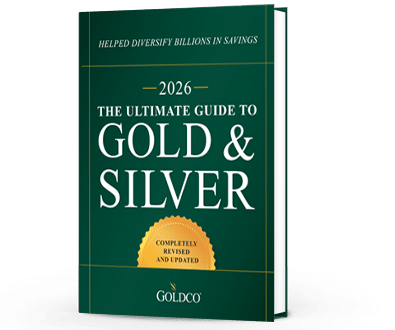Starting a Gold IRA: What You Need to Know
People choose to start a gold IRA for a number of different reasons Some are looking to help safeguard themselves against stock market instability Others are trying to help safeguard their wealth...
Retirement

The stock market bull run of the last three years has resulted in the creation of more 401(k) millionaires than ever before. But while it can be tempting to look at your 401(k) balance and think that you’re going to do well in retirement, you can’t forget one important thing: taxes.
One of the reasons 401(k) balances grow as large as they do is because they’re able to use pre-tax dollars and grow tax-deferred until it’s time to take a distribution. But when you retire and really need that money, Uncle Sam will be hanging over your shoulder looking to take his cut too.
Failing to account for taxation when planning for retirement can easily see a quarter of your retirement savings or more wiped out. That could put a severe crimp on your retirement plans, and turn your comfortable retirement into one that’s a lot more stressful.
With so many Americans expecting to spend more and more money on healthcare in retirement, and the cost of food, clothing, and housing continuing to rise year by year, forgetting about taxation can lead to undersaving and underinvestment that could force some tough choices in retirement. But proper planning can help you prepare better so that you’re not blindsided by severe tax consequences.
The first decision you’ll have to make is what kind of tax-advantaged account you’ll want to set up. You’re not limited to just one, either, so you can open multiple accounts and split your assets up as you wish.
Many people who open up retirement accounts do so through an employer-sponsored 401(k) account. It can be very beneficial to do that, particularly if your employer offers matching funds. That can add significantly to the amount of money you’re able to invest, and it’s essentially free money. Currently the maximum amount you may add to a 401(k) account in a single year is $19,000.
IRAs have a longer history than 401(k)s, but they have the downside that the contribution limit is only $6,000 per year. They’re not offered by most employers, but they can be another useful account to open for those who want to really maximize their retirement savings.
Finally there are Roth IRAs, which unlike normal 401(k) and IRA accounts use after-tax dollars. The upside is that distributions from Roth IRAs, unlike from normal 401(k)s and IRAs, aren’t taxed.
The advantage to a Roth IRA is that, if you expect to end up in a higher income bracket in retirement than during employment, you can save money on taxes by investing in a Roth IRA. Since the Roth IRA’s distributions aren’t taxed but the normal 401(k) or IRA’s distributions are taxed at normal income levels, that could save you several thousands of dollars in retirement.
Roth IRAs also don’t come with a requirement to take mandatory distributions in the year you turn 70 ½, something that could also save you some tax money once you’re retired. The only downside to opening a Roth IRA is that the $6,000 annual contribution limit applies to all IRAs. So if you have a normal IRA and a Roth IRA, you can only contribute $6,000 combined to the two of them.
These tax issues obviously bring up the fact that you need to have a good tax adviser who will guide you through the ins and outs of retirement taxation issues. It’s only too easy for many investors to make one tiny slip-up that can cost themselves thousands or tens of thousands of dollars in retirement.
Required mandatory distributions from 401(k) accounts or IRA accounts are one of those things that many investors forget about, and the rules can be quite tricky. If you fail to take enough money in required distributions you can be hit with penalties. But if you fail to account for how much you’re required to distribute each year, you can end up pushing your income up into a higher tax bracket, costing yourself money that you could have avoided spending had you structured your investments differently.
There are many different ways of protecting against that, and Roth IRA conversions are becoming more popular. That’s when investors decide to take the tax hit to their traditional retirement accounts and convert those funds into a Roth IRA, allowing continued tax-free growth well into retirement. Many even roll over the funds from those traditional accounts into gold IRAs, taking advantage of gold’s ability to maintain value over the long term in order to safeguard their retirement assets.
However you decide to do that, make sure that you enlist the services of a trusted and competent tax adviser from the outset. With the sums of money you stand to lose from making a mistake or a wrong decision, you can’t afford not to do that.

